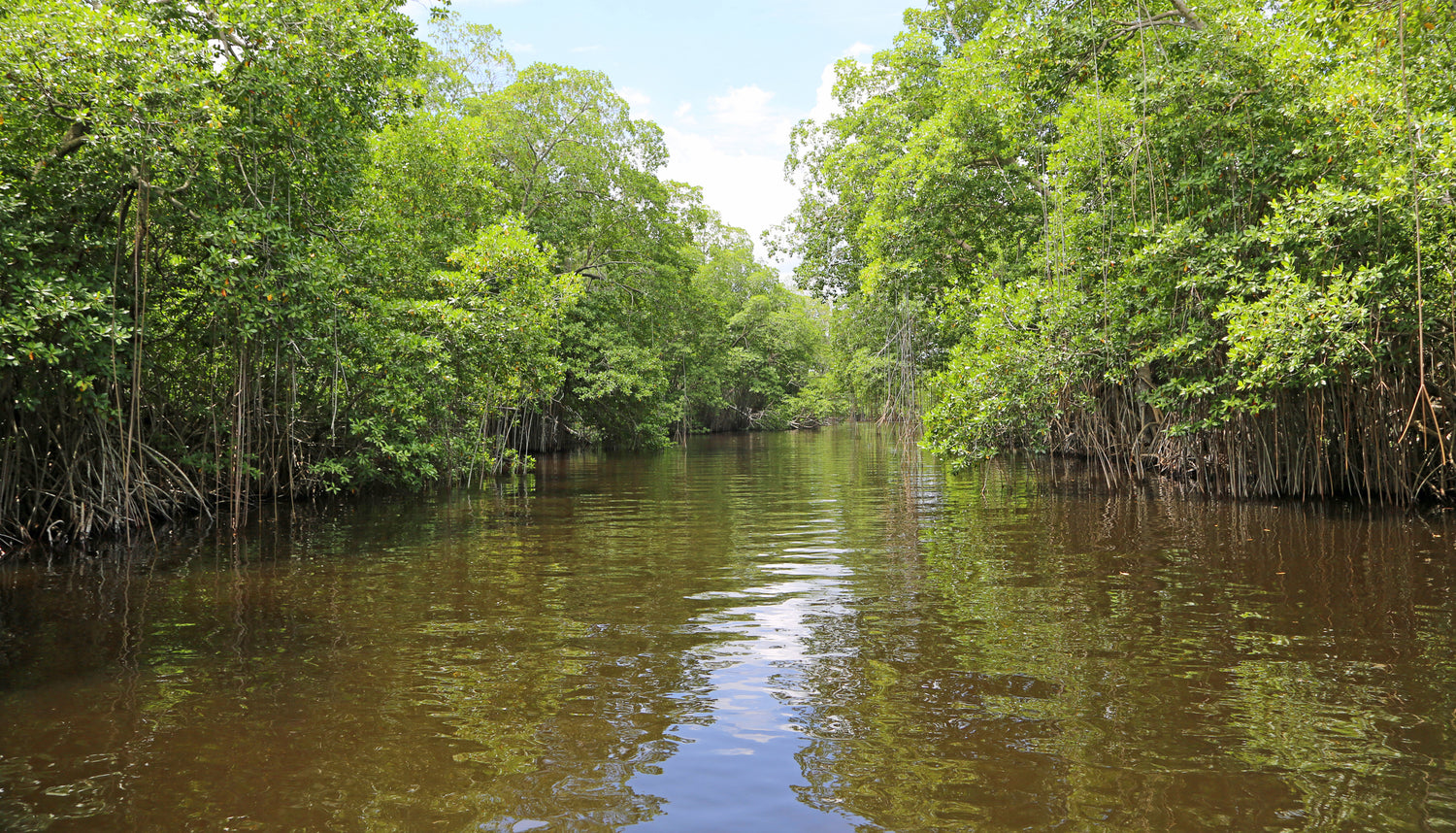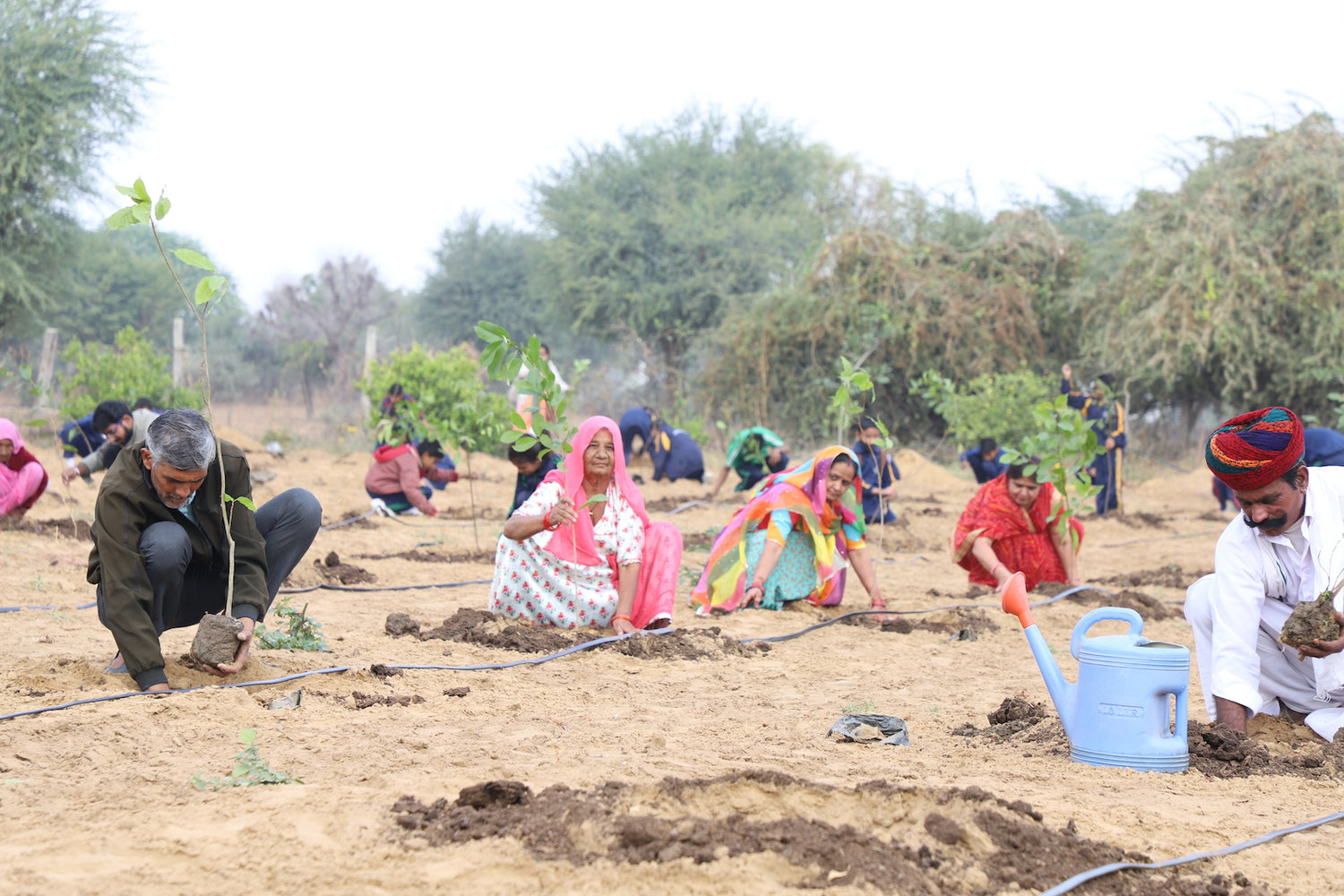Mangroves in Chennai: Pichavaram and Muthupet’s Urban Guardians
Chennai, the vibrant capital of Tamil Nadu, boasts more than just bustling streets and serene beaches. Nestled along its coastline are two ecological Read more
Connect with us
-
👥 Corporates
If you are looking for:
- 🌲 Tree Plantation Events
- 📊 CSR Projects
📧 corporate@growbilliontrees.com
📞 +91 9699723523
💬 +91 9325931304 WhatsApp (Only)
🕒 Mon - Sat | 10am - 7pm IST
-
🧩 Tree Plantation NGOs
If you are looking for:
- 💰 Financial Assistance
- 🤝 Operational Support
📧 support@growbilliontrees.com
📞 +91 9699723523
💬 +91 9325931304 WhatsApp (Only)
🕒 Mon - Sat | 10am - 7pm IST
-
🌼 Individuals
If you are looking for:
- 👥 Group Tree Plantation Drive
- 🌳 Bulk Tree Plantation
📞 +91 9699723523
💬 +91 9325931304 WhatsApp (Only)
🕒 Mon - Sat | 10am - 7pm IST
Trending
Trees for Corporates
Mangroves in Chennai: Pichavaram and Muthupet’s Urban Guardians
Chennai, the vibrant capital of Tamil Nadu, boasts more than just bustling streets and serene beaches. Nestled along its coastline are two ecological marvels: the Pichavaram Mangroves and the Muthupet Mangroves.
These mangrove ecosystems are not only biodiversity hotspots but also vital protectors of Chennai and its surrounding areas.
Acting as natural barriers against storms, supporting livelihoods, and combating climate change, they are indispensable to the region’s environmental and economic health.
Historical and Cultural Significance
Mangroves in Tamil Nadu have a rich history intertwined with the lives of coastal communities. Ancient records mention these forests as sources of firewood, medicinal plants, and breeding grounds for fish.
Pichavaram, one of the world’s largest mangrove forests, and Muthupet, renowned for its serenity, have long been celebrated as ecological treasures. Local folklore often highlights the protective role of mangroves, particularly during storm surges and floods.
Ecological Importance
1. Cyclone and Flood Mitigation
The mangroves in Pichavaram and Muthupet act as natural barriers, absorbing tidal waves and reducing the impact of cyclones. Events like Cyclone Gaja (2018) underscored the importance of these ecosystems in safeguarding coastal villages and cities, including Chennai.
2. Biodiversity Hotspots
Pichavaram and Muthupet are home to diverse flora and fauna, including over 200 species of birds, such as egrets, herons, and pelicans. These mangroves also provide critical habitats for crabs, prawns, and fish, supporting marine biodiversity.
3. Carbon Sequestration
Mangroves store up to five times more carbon per hectare than tropical forests, making them crucial in the fight against climate change. The dense root systems trap carbon dioxide, reducing the overall carbon footprint of the region.
4. Livelihood Support
Local communities depend on these mangroves for fishing, honey collection, and eco-tourism. Sustainable use of mangrove resources provides economic stability while preserving the ecosystem.
Fun Facts About Pichavaram and Muthupet Mangroves
- Pichavaram’s Tunnels: The mangroves form intricate waterways, often called “green tunnels,” offering a surreal boating experience for visitors.
- Muthupet Lagoon: Known for its serene backwaters, Muthupet is an ideal spot for bird-watching and photography.
- Rare Birds: Both mangroves attract migratory birds like flamingos and painted storks during the winter months, making them a paradise for ornithologists.
Environmental Challenges
-
Urbanization and Deforestation The expansion of urban areas and agricultural fields has led to the destruction of mangrove forests, reducing their protective capabilities.
-
Pollution Industrial waste, untreated sewage, and plastic pollution are significant threats to the health of these ecosystems.
-
Rising Sea Levels Climate change has led to increased salinity and rising sea levels, affecting the growth and regeneration of mangroves in Tamil Nadu.
-
Unregulated Tourism While eco-tourism boosts local economies, unregulated activities can harm mangrove habitats, disrupting wildlife and degrading water quality.
Grow Billion Trees: Protecting Pichavaram and Muthupet
Grow Billion Trees is at the forefront of mangrove restoration and conservation efforts in Tamil Nadu. By leveraging technology, engaging local communities, and collaborating with government bodies, the organization ensures the sustainability of these critical ecosystems.
Collaborations
- Partnering with Tamil Nadu Forest Department and NGOs to restore degraded mangrove areas.
- Collaborating with academic institutions to study the biodiversity and ecological benefits of mangroves.
Execution Strategies
- Establishing nurseries for native mangrove species like Rhizophora mucronata and Avicennia marina.
- Conducting plantation drives in degraded areas, focusing on restoring mangroves lost to cyclones and human activities.
- Using drone technology and satellite imagery to monitor mangrove health and restoration success.
Awareness and Advocacy
- Hosting workshops in Chennai schools and coastal villages to educate residents about the importance of mangroves.
- Promoting sustainable tourism activities like guided boat tours and bird-watching expeditions.
- Running social media campaigns to highlight the role of mangroves in combating climate change and supporting biodiversity.
Key Achievements by Grow Billion Trees
- Post-Cyclone Restoration: After Cyclone Gaja, Grow Billion Trees restored over 300 hectares of mangroves in Muthupet and surrounding areas, creating a resilient coastal barrier.
- Community Engagement: Local fisherfolk and women’s self-help groups have been trained to cultivate mangrove saplings, providing both ecological and economic benefits.
- Eco-Tourism Development: Initiatives like mangrove kayaking and guided tours have increased awareness while generating sustainable revenue for conservation efforts.
Future Prospects
By 2030, the mangroves in Pichavaram and Muthupet can serve as global models for sustainable coastal conservation.
Expanding mangrove coverage, improving biodiversity, and fostering eco-tourism will enhance Tamil Nadu’s resilience to climate impacts. Public-private partnerships and increased community participation are key to achieving these goals.
Conclusion
The mangroves of Pichavaram and Muthupet are not just ecological wonders but vital guardians of Tamil Nadu’s coastline.
They protect against natural disasters, support biodiversity, and sustain livelihoods, proving their importance for both nature and people.
Grow Billion Trees is committed to preserving and expanding these ecosystems through innovative strategies, community collaboration, and long-term conservation plans.
With collective efforts, these mangroves will continue to thrive as urban guardians for Chennai and the surrounding regions.
Pichavaram Mangroves
Known for their stunning “green tunnels,” these mangroves near Chennai offer a biodiversity-rich maze of waterways, attracting tourists and wildlife enthusiasts alike.
Muthupet Mangroves
This serene mangrove forest is a bird-watcher’s paradise, blending tranquil lagoons with vibrant biodiversity, making it a hidden gem along Tamil Nadu’s coast.
Mangroves and Cyclone Protection in Chennai
Acting as nature’s barricade, these mangroves reduce the impact of cyclones like Gaja, proving their worth as Chennai’s natural defense system.
Biodiversity in Pichavaram and Muthupet
From rare birds like flamingos to tiny mudskippers, these mangroves are buzzing with life, making them ecological treasures worth preserving.
Mangroves and Carbon Storage
Pichavaram and Muthupet’s mangroves store carbon like pros, helping Tamil Nadu combat climate change one root at a time.
Threats to Mangroves near Chennai
Urban sprawl, pollution, and rising sea levels are encroaching on these vital ecosystems, calling for urgent conservation measures.
Grow Billion Trees in Tamil Nadu
This initiative restores mangroves in Pichavaram and Muthupet, engaging communities and leveraging technology to ensure long-term ecological health.
Mangroves and Fisheries
These mangroves act as nurseries for fish and crabs, sustaining livelihoods for Chennai’s coastal communities while supporting marine biodiversity.
Mangroves and Eco-Tourism in Chennai
Boating through Pichavaram’s green corridors or exploring Muthupet’s lagoons offers a perfect mix of adventure and conservation awareness.
Mangroves and Water Quality
Acting as natural filters, these mangroves trap sediments and pollutants, ensuring cleaner coastal waters for Chennai’s marine ecosystems.
Mangroves and Climate Resilience
Adapted to salty waters and rising seas, Pichavaram and Muthupet’s mangroves stand tall as Tamil Nadu’s frontline defense against climate change.
Community Role in Mangrove Conservation
Local communities are crucial in protecting Pichavaram and Muthupet, partnering with Grow Billion Trees to balance livelihoods and sustainability.
You may like
Corporate Plantations
FAQ
What are the mangroves in Pichavaram and Muthupet?
These mangroves are nature’s guardians along Tamil Nadu’s coast, protecting against cyclones, hosting rich biodiversity, and sustaining local communities. Grow Billion Trees actively restores and protects these ecosystems.
Why are Pichavaram and Muthupet mangroves important?
They mitigate floods, support fisheries, and combat climate change while hosting diverse wildlife. Grow Billion Trees ensures these vital ecosystems thrive through restoration and awareness initiatives.
How do mangroves protect against cyclones in Chennai?
Mangroves absorb storm surges and reduce tidal impacts, acting as natural shields during cyclones like Gaja. Grow Billion Trees strengthens this protection with reforestation projects.
What wildlife thrives in these mangroves?
From flamingos to mudskippers and fiddler crabs, these mangroves are biodiversity hotspots. Grow Billion Trees works to preserve these habitats for flora and fauna.
How do mangroves support local livelihoods?
Fishing, crab harvesting, and eco-tourism rely on healthy mangroves. Grow Billion Trees restores these ecosystems to ensure sustainable livelihoods for coastal communities.
What threats do Chennai’s mangroves face?
Urbanization, pollution, and rising sea levels threaten these ecosystems. Grow Billion Trees addresses these challenges with conservation projects and community engagement.
What is Grow Billion Trees doing for Tamil Nadu’s mangroves?
We plant mangroves, partner with communities, and use technology to monitor and restore these vital forests, ensuring their sustainability.
How do mangroves combat climate change in Tamil Nadu?
Mangroves store carbon at high rates and act as buffers against rising seas, making them climate heroes. Grow Billion Trees amplifies these benefits through restoration.
Why is Pichavaram unique?
Pichavaram is one of the world’s largest mangrove forests, known for its labyrinthine waterways and vibrant biodiversity. Grow Billion Trees actively works to protect its ecological significance.
What makes Muthupet’s mangroves special?
Muthupet’s serene lagoons and rich birdlife make it a unique ecological gem. Grow Billion Trees ensures its preservation through focused conservation efforts.
How do mangroves benefit eco-tourism in Chennai?
Activities like boating through Pichavaram’s green corridors or bird-watching in Muthupet attract tourists while promoting conservation. Grow Billion Trees encourages sustainable tourism models.
Can communities help conserve these mangroves?
Absolutely! Local communities are essential for mangrove protection. Grow Billion Trees empowers them with resources and training for sustainable conservation practices.























